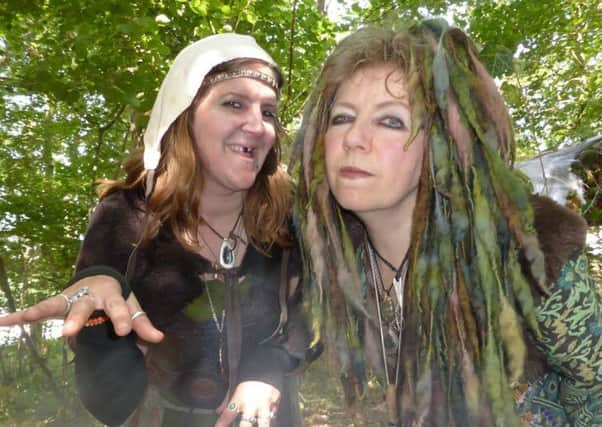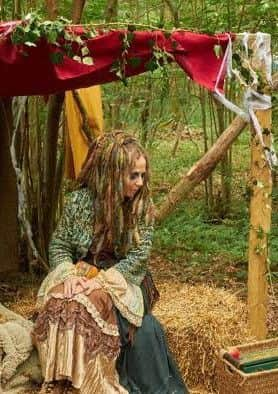Loxwood Joust: Hubble bubble, toil and trouble


This year’s Loxwood Joust will be held on the site over two weekends, on August 5&6 and 12&13, giving families plenty of opportunity to revel in the spectacular event.
As part of the build-up, event organisers have compiled a series of fascinating facts about all things Medieval.
Here, we explore the world of the witches.


The Myth
Advertisement
Hide AdAdvertisement
Hide AdWitches were the foulest creatures known to walk the world of the Middle Ages, dabblers in the dark arts, servants of the mysterious spirits of this world and worshippers of pagan beliefs.
People believed that Witches made secret pacts with the Devil that allowed them to haunt the skies on flying broomsticks, create storms and even transform into animals to keep watch over their woodland territories.
Those that hunted these vile creatures were known as the Malleus Maleficarum, Witch Hunters. Popular beliefs spouted that to break the curse or hex of a witch, you needed to first draw her blood.


The Truth
Most practitioners of the arts usually provided services to the people of their communities. These individuals were known as White Witches, Wise Women or the Cunning Folk. They used their knowledge of healing herbs and plants to aid those they came into contact with.
Advertisement
Hide AdAdvertisement
Hide AdThere were those who were said to have used their arts for more selfish desires, helping only themselves in the harming of their enemies. These individuals were known as Black Witches, the distinction between the two would be lost in the chaos to come, during the Renaissance era.
What would become the name given to the Witch Hunters first began as a book, which would lead to the hysteria surrounding these practitioners of the dark arts. The Malleus Maleficarum (also known as the Hammer of Witches) was a tome published by two inquisitors of the Dominican. After the terrible wars and outbreaks of famine and disease throughout the land, the people were looking for someone to blame for their ill –given lot in life. The Hammer of Witches provided the people with a united front against such bad times, with its talks of satanic rituals and the summoning of abominations through depraved acts of sexual natures, it wasn’t long before the fate of all witches was set upon a bloody path of religious zealotry.
Role
A witch’s role in Medieval England would have been that of the village wisewoman. She helped birth babies, she healed the sick with herbs and muttered incantations, maybe she practised a little divination by casting the runes or even bits of twig. She dispensed advice and was able to use astrology to help the querent, often she was versed in astronomy, since at the time, the two sciences were considered to be inseparable. She could make love potions and on occasion, if the need arose, curse someone’s enemy.
Witches were often indistinguishable from common folk, since later in the era to be a recognisable witch was punishable. So it could be the person in the hovel next door and not necessarily a batty, toothless, wild haired old woman clad in rags who lived alone and had many cats.
Advertisement
Hide AdAdvertisement
Hide AdWitches were mainly women, but it was not unknown for a man to be one.
The Tools of a witch:
Cup and Chalice: This is usually silver coated and is used to symbolise the female reproductive system.
Wand: Usually made from natural materials such as oak, the wand represented the power of wind.
A Knife: The knife would usually be black handled and was a symbol of fire.
Advertisement
Hide AdAdvertisement
Hide AdPlatter: Most traditionally here, a pentacle would be used. Both were symbols for stability and Earth.
The Book of Shadows: This tome or grimoire is the repository of a witches spells, incantations and ritual practices.
Witch Facts:
The term Coven, was used to describe a gathering of witches.
Legend states, that a Spanish armada was destroyed in a storm conjured by a coven of witches.
Advertisement
Hide AdAdvertisement
Hide AdWitch Hunters were advised to shave the Witch of all bodily hair, so that they could not hide magical items that would ward them from the hunters.
In England, a total of 270 witches were put on trial. 247 of those tried were women, while 23 were men.
Ten random facts about witches!!
• They can walk backwards without falling over ( most of the time)
• They can float on water in a sieve
• All witches are a bit cross eyed (one eye needs to be in the ‘other realm’)
Advertisement
Hide AdAdvertisement
Hide Ad• Cats are their preferred pets or familiars, but anything will do, I knew a wise woman who kept a pet pebble from the beach, it was her best friend
• Witches can’t drink cows’ milk (it has a tendency to curdle in their presence) they prefer goats’milk, which tastes rank anyway
• Witches love to sing, the louder and more out of tune, the better
• A witch’s cauldron is not just for spells, most give it a quick wipe between potions and then make the supper in it.
• Witches don’t have to be just women, in fact, a male witch is called a witch.. NOT a wizard or warlock!